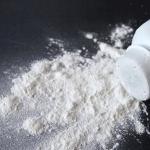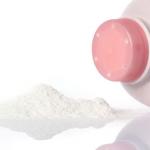Talcum Powder Lawsuit
(Updated December 20, 2018)
Since 1971, more than 20 studies have linked talc powder to ovarian cancer. In 2003, an analysis of 16 of these studies found that women using talcum powder were 33 percent more likely to develop ovarian cancer.
Our attorneys are pursuing lawsuits on behalf of women who developed ovarian cancer after using talcum powder for feminine hygiene.
Johnson & Johnson, producer of popular talc-based powders like Baby Powder and Shower-to-Shower, allegedly knew about the ovarian cancer risk since at least 1971, but failed to warn consumers of the dangers. As a result, thousands of women have filed talc lawsuits against Johnson & Johnson.
One woman, Lois Slemp of Virginia, was awarded $110 million by a St. Louis jury, which found J&J liable for Ms. Slemp's ovarian cancer. Twenty-two other women obtained a $4.7 billion talc verdict in July 2018.
If you or someone you know developed ovarian cancer or mesothelioma after using talcum powder, our attorneys would like to speak with you. For more information, contact us today for a free, no-obligation legal consultation.
What Are Some Talc Products and Uses?
Talc, the softest mineral known to man, has been the main component of baby powder and other cosmetic products for decades. Talcum powder reduces friction and absorbs moisture. Combined with its natural softness, these traits make it an ideal component in facial and body powders.
Most famously, talc is the main ingredient in Johnson & Johnson’s iconic Johnson’s Baby Powder. Many women use the baby powder on their genitals for feminine hygiene, which some studies have shown to increase the risk of ovarian cancer.
Other plaintiffs allege that J&J's talcum powders contained asbestos and caused them to contract mesothelioma, a fatal form of cancer.
What Are Some of Talc's Potential Side Effects?
Talcum powder may cause serious side effects. For decades, researchers have noted the potential link between talcum powder and ovarian cancer. It is believed that talc powder, when used near the genitals, can travel to the ovaries and become embedded in the tissue.
Researchers found that women using talcum powder during ovulation were 92% more likely to develop ovarian cancer.
Though talc is a natural mineral, it is very difficult for the body to remove the particles. As a result, inflammation may occur and cancerous tumors may then form. Similarly, when inhaled, talcum powder has been shown to increase the risk of lung cancer.
As early as 1971, a study in the medical journal The Lancet found that a majority of ovarian tumors had talc particles “deeply embedded” in them. In 1982, researchers found that women using talcum powder during ovulation were 92 percent more likely to develop ovarian cancer.
Over the next 30 years, an additional 21 studies were performed on talc powder. Almost all of these studies found that women who used these products near their genitals were at an increased risk for developing ovarian cancer.
To date, both the National Cancer Institute and the American Cancer Society consider talc use near the genitals a “risk factor” for ovarian cancer.
Do Talc Labels Warn About the Health Risks?
No. Despite mounting research that talc-based powders may increase the chance of developing ovarian cancer or mesothelioma, Johnson & Johnson and other manufacturers have not placed warnings about these risks on their products.
Which Companies Are Subject to Talc Litigation?
Any manufacturer of talc-based products that have contributed to a woman developing ovarian cancer may be held liable through a lawsuit. Thousands of suits have been filed against Johnson & Johnson for failing to warn women of the risk of developing ovarian cancer from using its popular baby powder in the pelvic area. One such case (Jacqueline Fox; see below) resulted in monetary awards of $72 million.
Who Has Filed Lawsuits Against Johnson & Johnson?
Here are some of the most notable talc lawsuits filed against Johnson & Johnson:
Deane Berg v. Johnson & Johnson et al. (2013)
In 2013, a physician’s assistant named Deane Berg sued Johnson & Johnson after contracting ovarian cancer she says developed from her regular baby powder use. Ms. Berg turned down a $1.3 million settlement and took the case to court, where Johnson & Johnson was found guilty of negligence, fraud, and conspiracy for not warning women of its products’ health risks.
Mona Estrada v. Johnson & Johnson et al. (2014)
In April 2014, a California woman named Mona Estrada filed suit against Johnson & Johnson for failing to warn women of the increased risks of ovarian cancer.
The complaint stated, “As a result of the defendants’ misrepresentations and omissions, plaintiff and the proposed class have purchased a product which is potentially lethal.”
Ms. Estrada has not suffered any personal injury, but says she would not have regularly bought Johnson’s Baby Powder for the past 60+ years had she known of the adverse health effects.
Barbara Mihalich v. Johnson & Johnson et al. (2014)
The next month, Barbara Mihalich of Illinois filed a class action suit alleging that Johnson & Johnson utilized deceptive business practices and profited unjustly from its talc products.
Neither Ms. Estrada nor Ms. Mihalich suffers from ovarian cancer or any other talc-related side effects, but say they suffered economic injury from purchasing Johnson & Johnson’s unsafe products over many years.
Gloria Ristesund v. Johnson & Johnson et al. (2016)
In May 2016, a Missouri jury found in favor of Gloria Ristesund, who contracted ovarian cancer after using Johnson’s Baby Powder and Shower to Shower Powder on her pelvic area for decades. (As a result, Ms. Ristesund had to have a hysterectomy and other surgeries.) The jury awarded Ms. Ristesund $55 million: $50 million for punitive damages, and $5 million for compensatory damages.
But Johnson & Johnson successfully appealed this verdict in June 2018.
Deborah Giannecchini v. Johnson & Johnson (2016)
In October 2016, a St. Louis jury awarded $70 million to Deborah Giannecchini of Modesto, CA. Ms. Giannecchini developed ovarian cancer in 2012 after many years of using Johnson’s Baby Powder.
The plaintiff’s attorney, Jim Onder, said that by issuing this verdict, the jury “once again reaffirmed the need for Johnson & Johnson to warn the public of the ovarian cancer risk associated with its product.”
But Johnson & Johnson once again said it would appeal, “because we are guided by the science, which supports the safety of Johnson’s Baby Powder.”
Lois Slemp v. Johnson & Johnson (2017)
In May 2017, a St. Louis jury awarded a staggering $110 million to Lois Slemp (62) of Wise, Virginia. Ms. Slemp alleged that her regular use of Johnson's Baby Powder and Shower-to-Shower products over a 40-year span caused her to develop ovarian cancer, which then spread to her liver. Ms. Slemp also alleged that Johnson's Baby Powder contained asbestos, which the company denied.
The jury emphatically sided with Ms. Slemp. Of the $110 million award, $105 million were were punitive damages.
Ms. Slemp's attorney, Ted Meadows, said, "Once again we’ve shown that these companies ignored the scientific evidence and continue to deny their responsibilities to the women of America. They chose to put profits over people, spending millions in efforts to manipulate scientific and regulatory scrutiny.”
Johnson & Johnson vowed to appeal the verdict.
Stephen Lanzo v. Johnson & Johnson (2018)
In April 2018, a New Jersey jury awarded $117 million to investment banker Stephan Lanzo and his wife: $80 million in punitive damages and $37 million in compensatory damages. Mr. Lanzo claimed that he contracted mesothelioma after more than 30 years of using Johnson’s Baby Powder and Shower-to-Shower products. He alleged that these products contained asbestos, which causes mesothelioma.
Johnson & Johnson argued that Mr. Lanzo must have encountered asbestos in his childhood home or his school, and that these locations were to blame for his mesothelioma. The jury disagreed, giving Mr. Lanzo and his wife a jaw-dropping $117 million.
Johnson & Johnson appealed the verdict, but a New Jersey state judge upheld it.
Who Is Eligible for a Talc Lawsuit?
If you or a loved one contracted ovarian cancer or mesothelioma after using talc-based products, you may be owed compensation for some combination of the following:
- Pain and suffering
- Medical bills
- Lost wages
- Funeral expenses (in the case of a loved one’s death)
How Much Does It Cost?
Nothing. We abide by the contingency fee contract, which means that we will only collect a fee if the case is successful. We accept a fixed percentage (typically one-third) of the recovery.
Why Should I Contact Morgan & Morgan?
Our motto is “For the People” because we represent regular Americans who want to hold large companies accountable. We battled Big Tobacco for years, winning $90 million in verdicts and settlements.
We are one of the largest consumer protection firms in the country, with more than 400 attorneys.
We are trial lawyers who are not afraid to go up against big corporations, and we have the track record to prove it.
As one of the largest consumer protection firms in the country—with more than 400 attorneys and a support staff of over 2,000 people—we are one of the few with the resources to take on Johnson & Johnson and other companies of its stature.
To date we have won $5 billion for our clients.
What's the First Step in Filing a Lawsuit?
Contact us immediately for a free consultation. These lawsuits are time-sensitive, so it is crucial that you reach out to us as soon as possible to determine if you are owed money for damages.
Did you find what you need?





